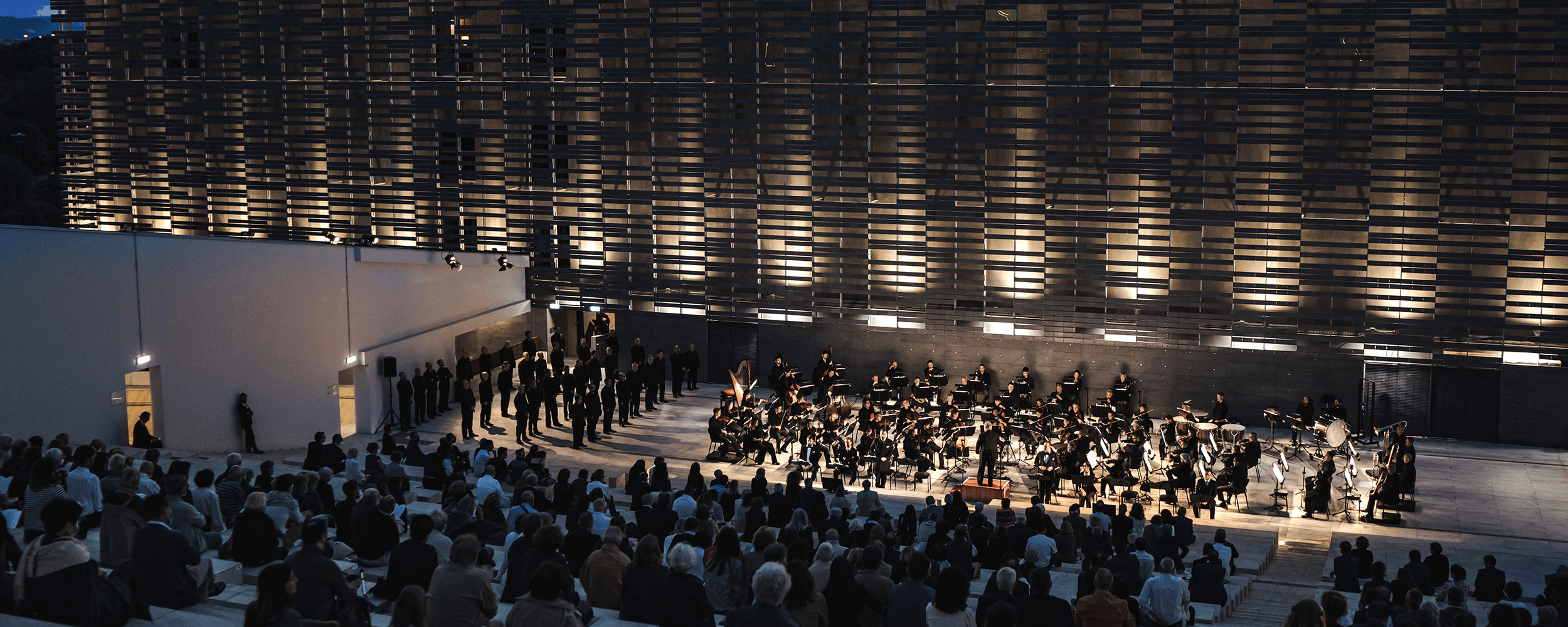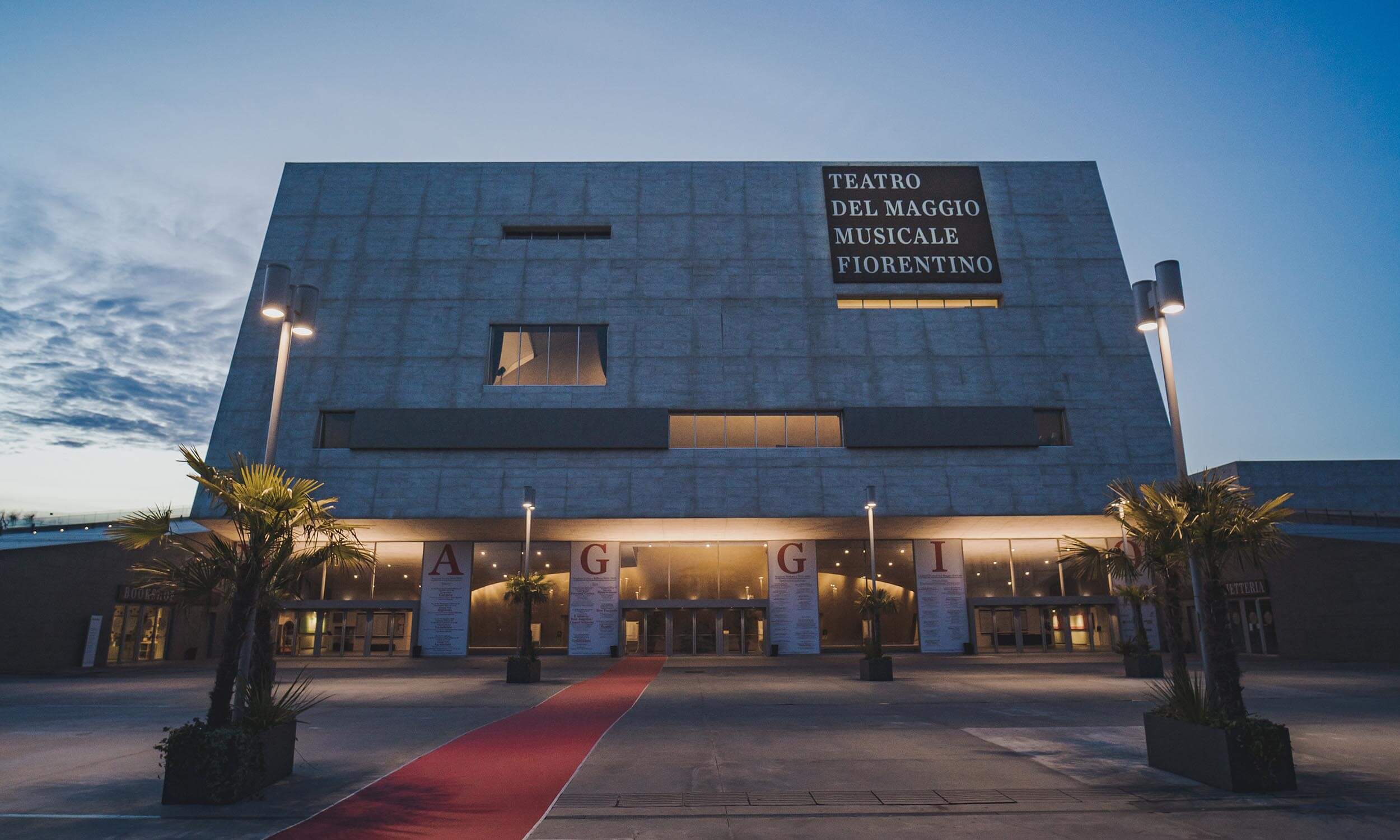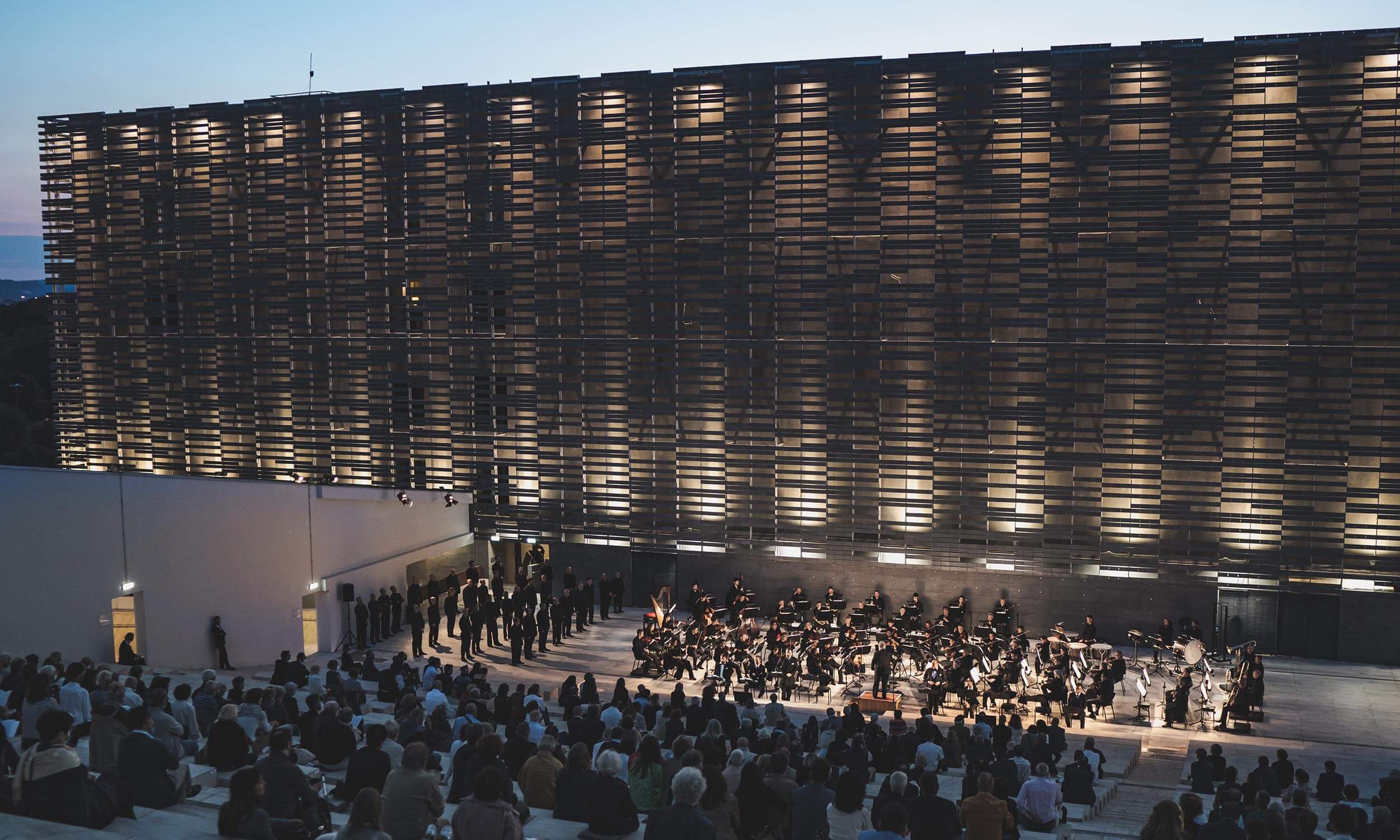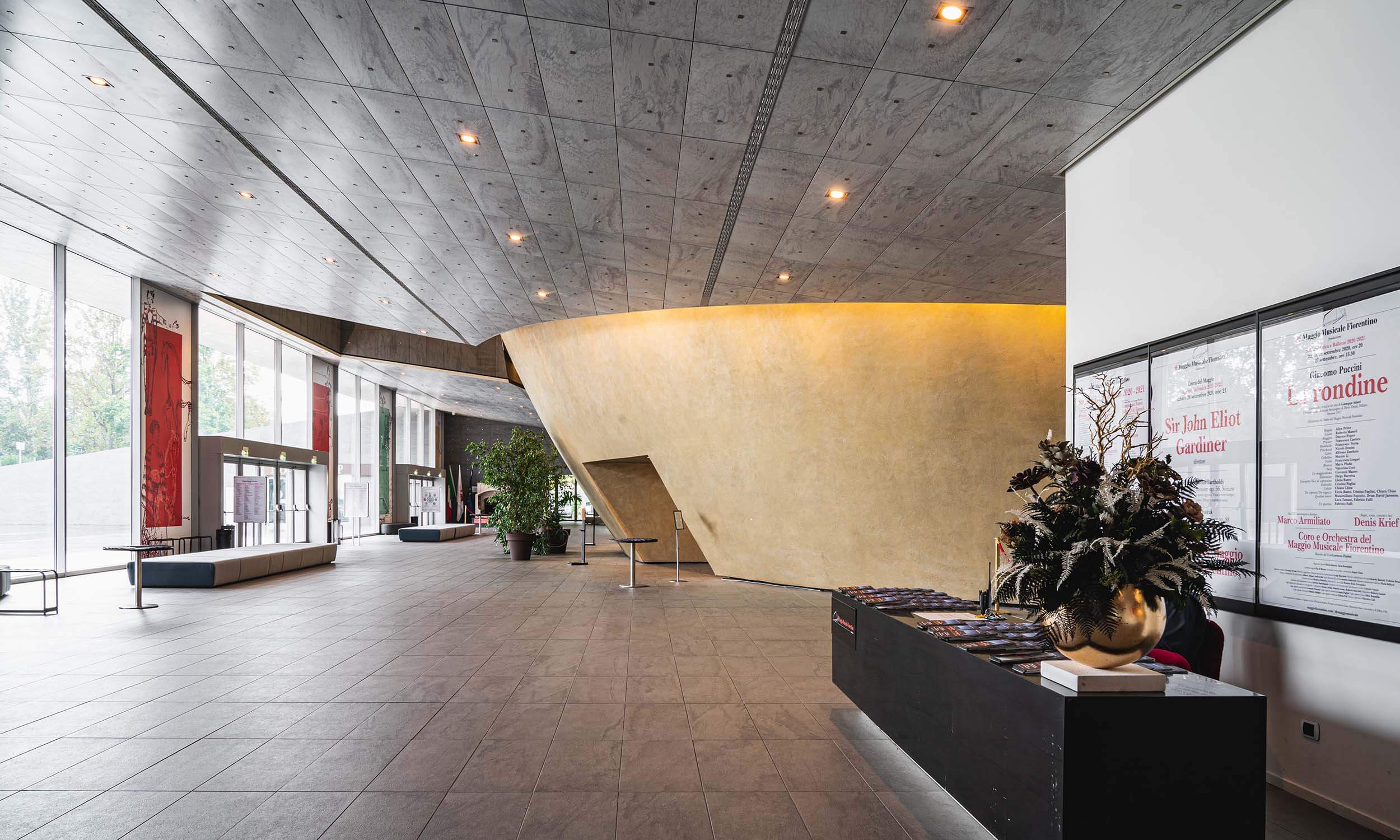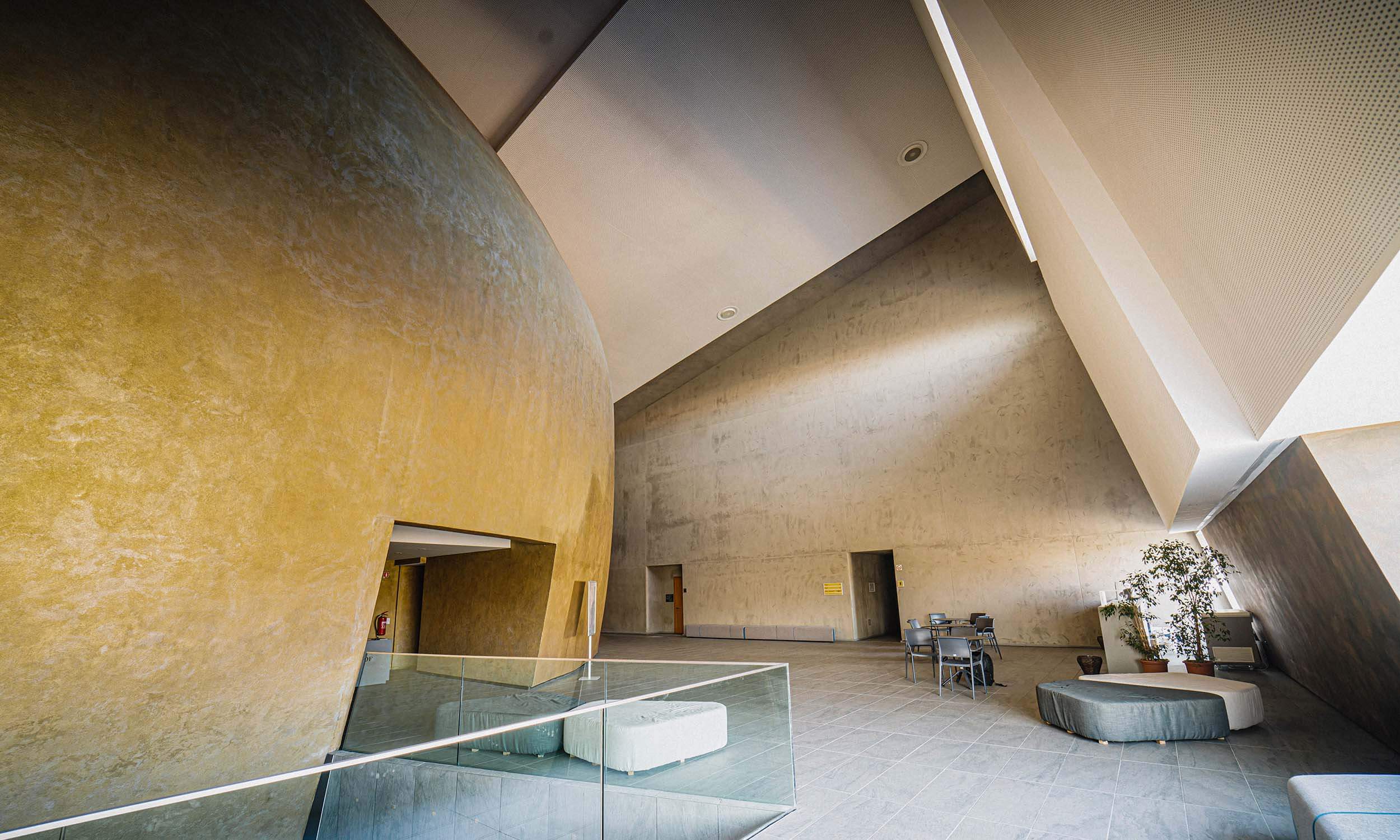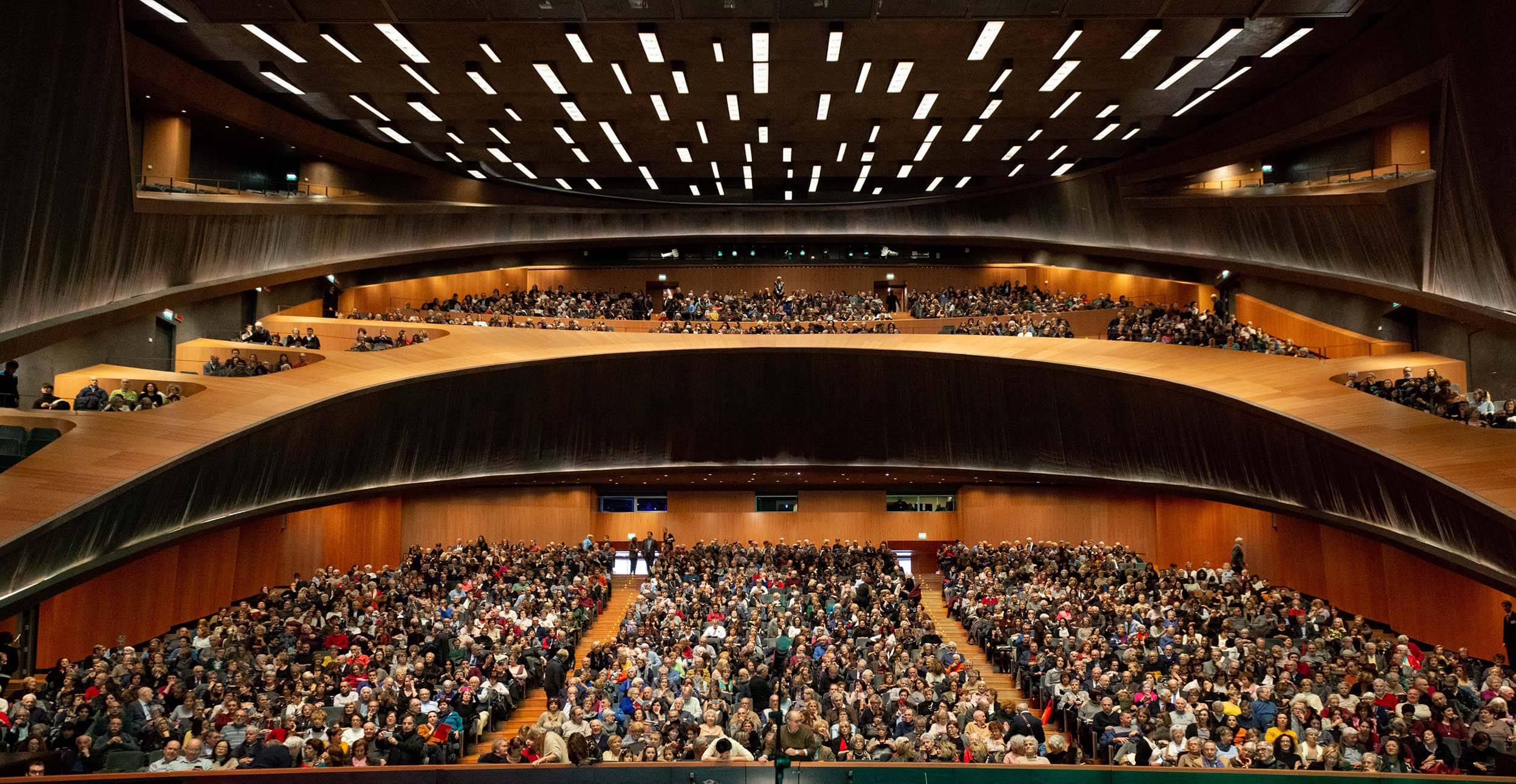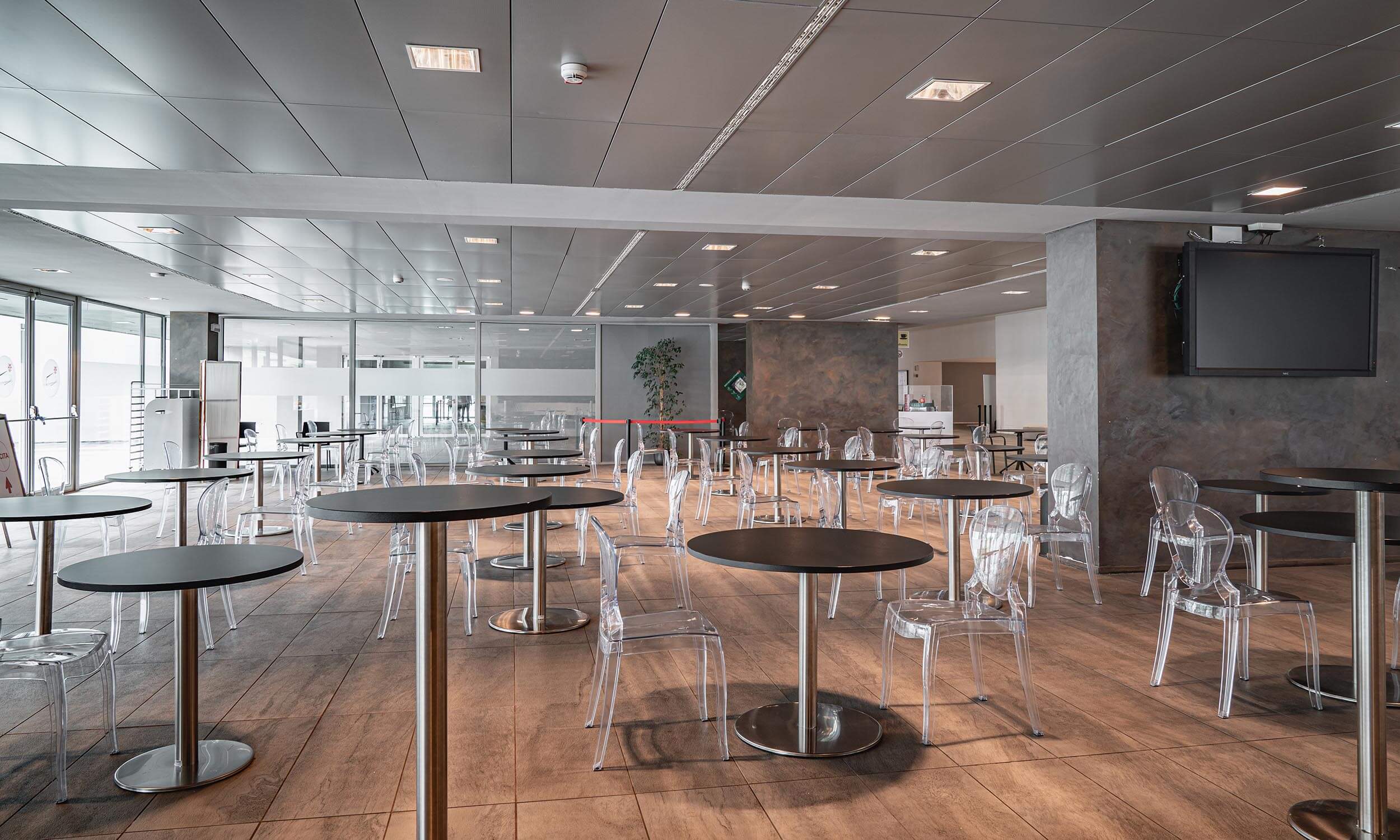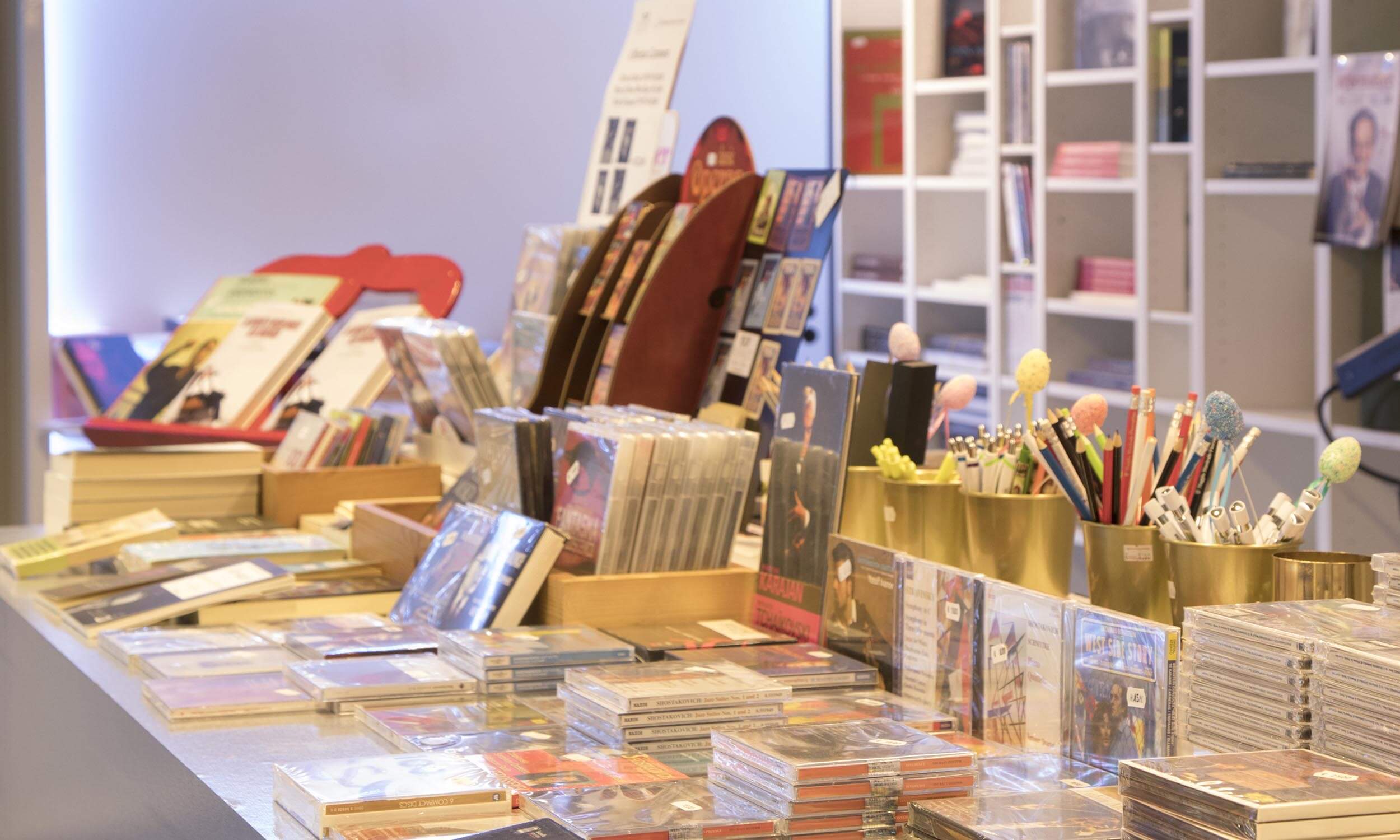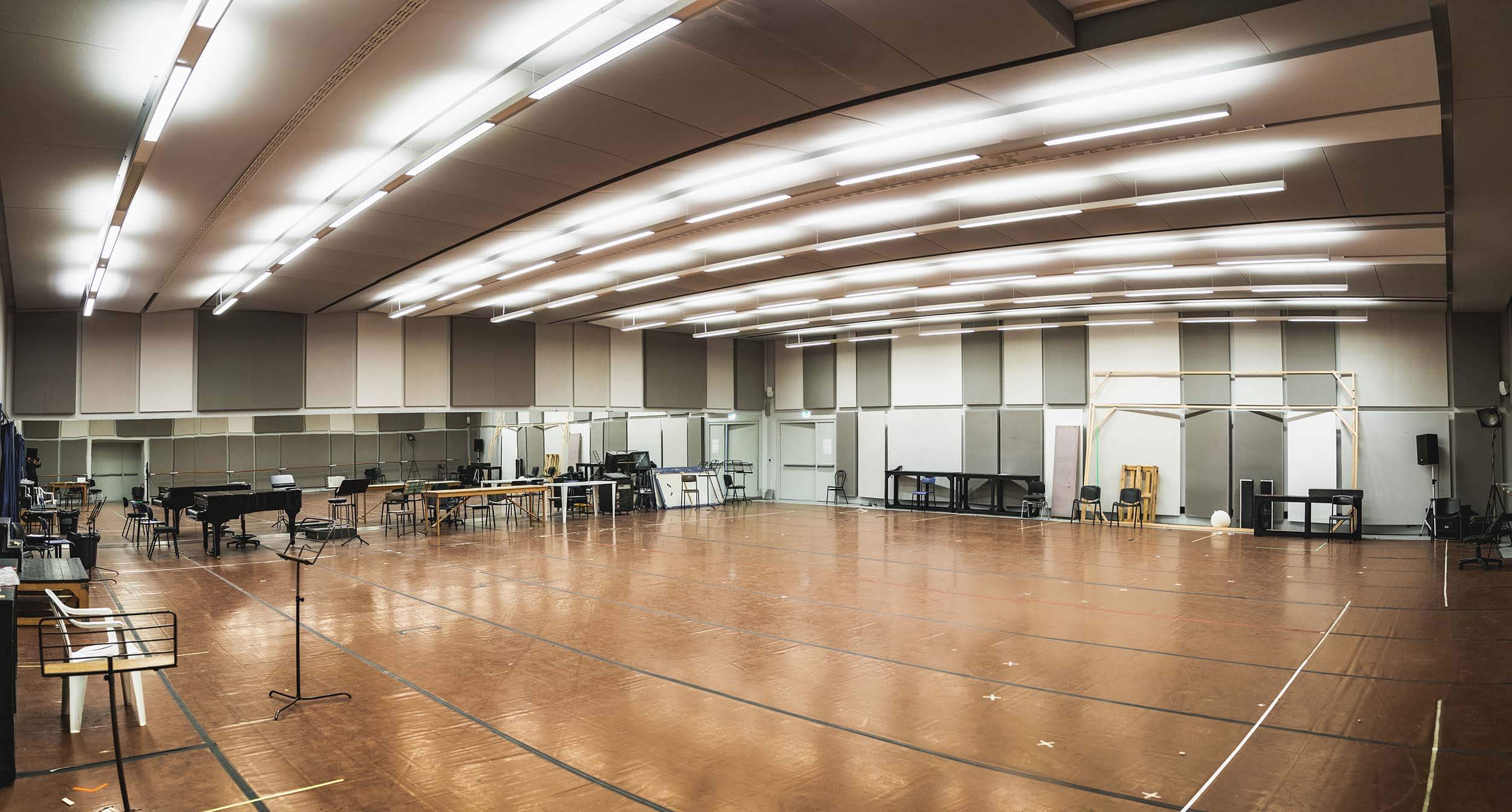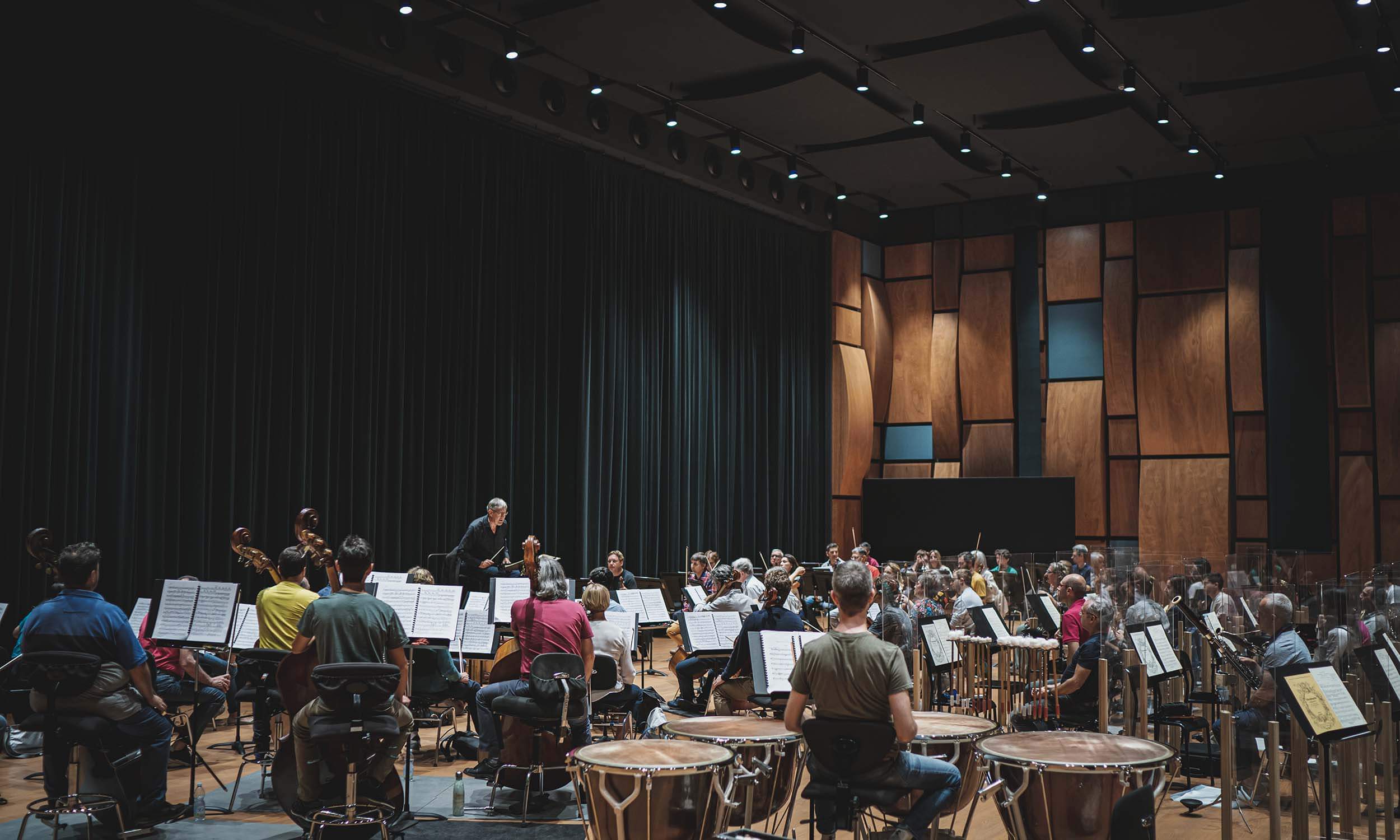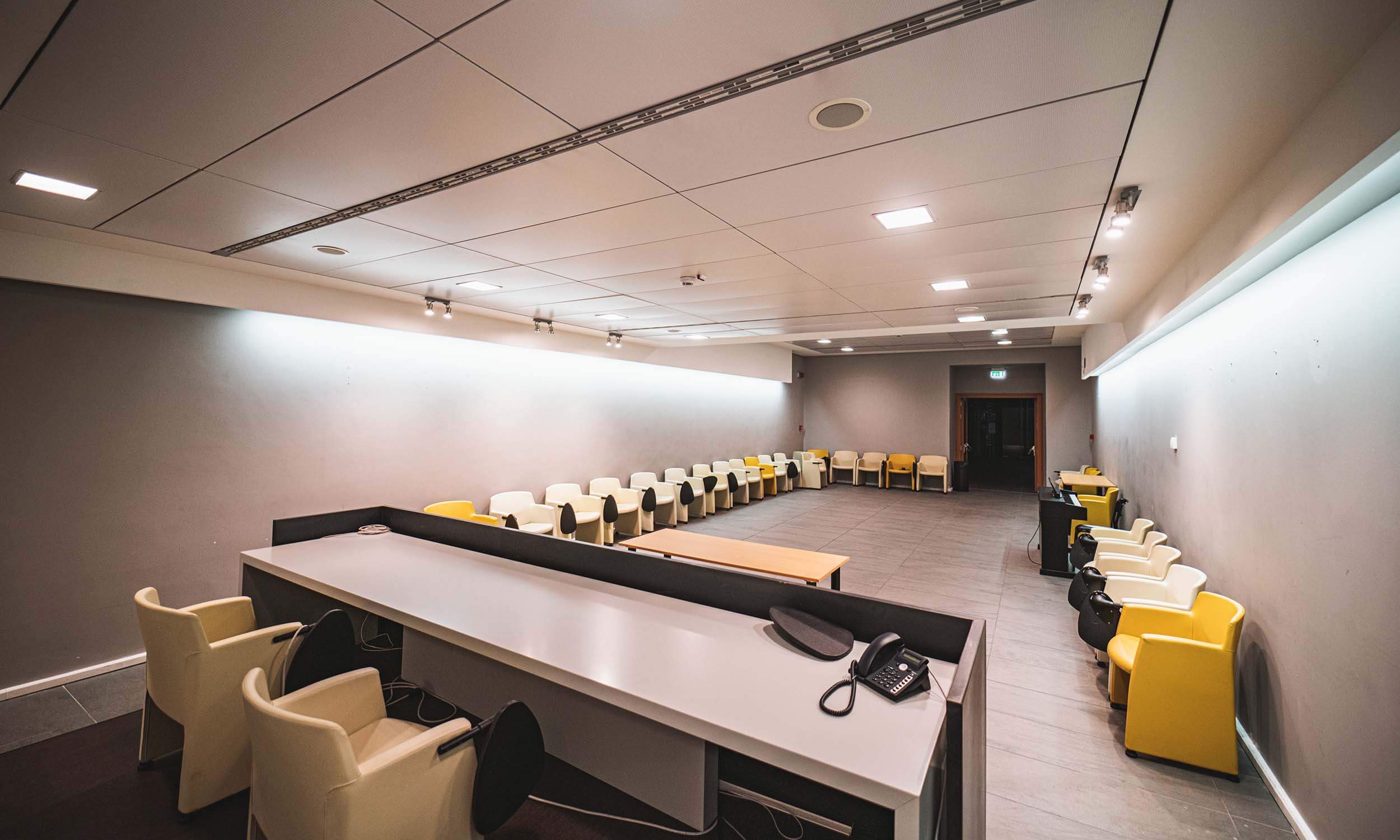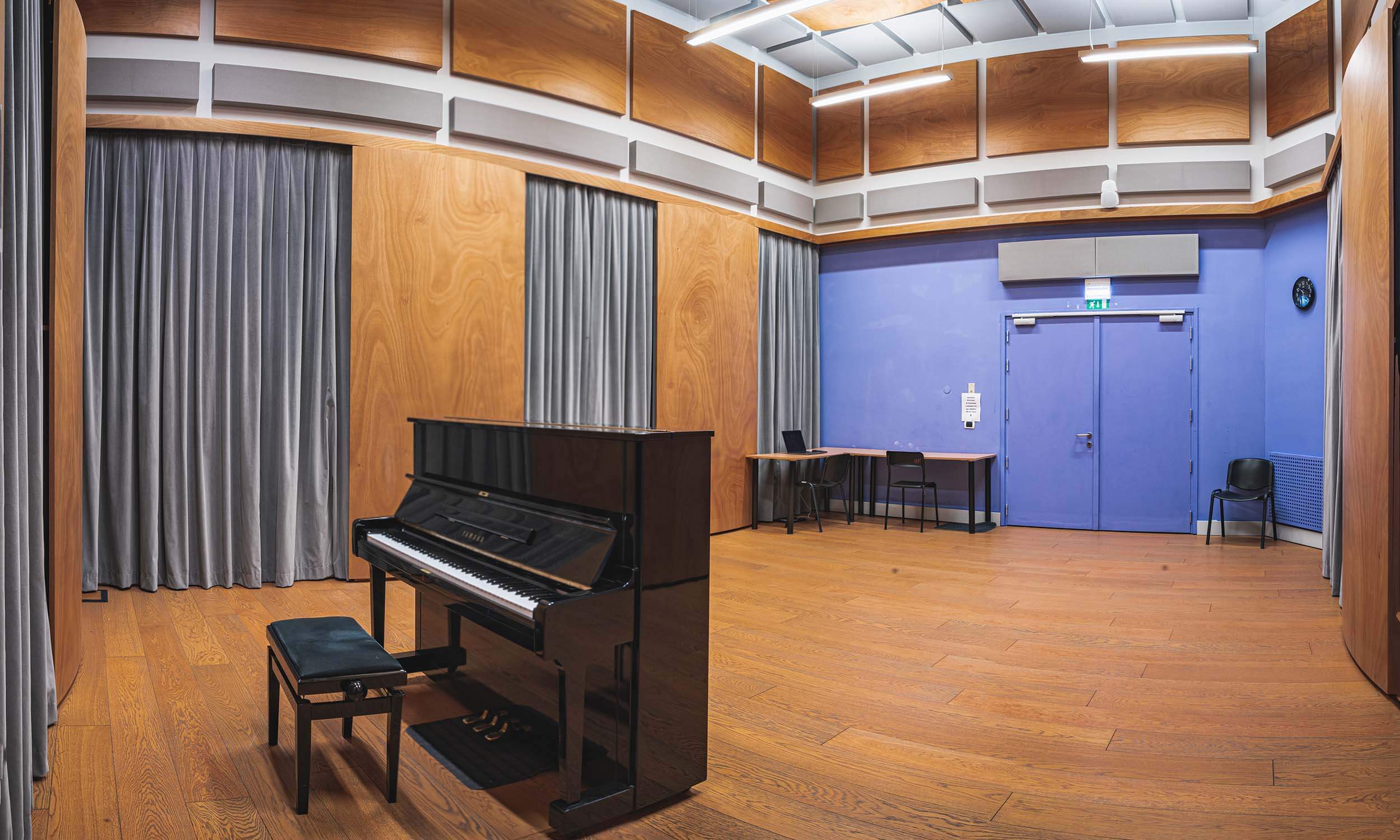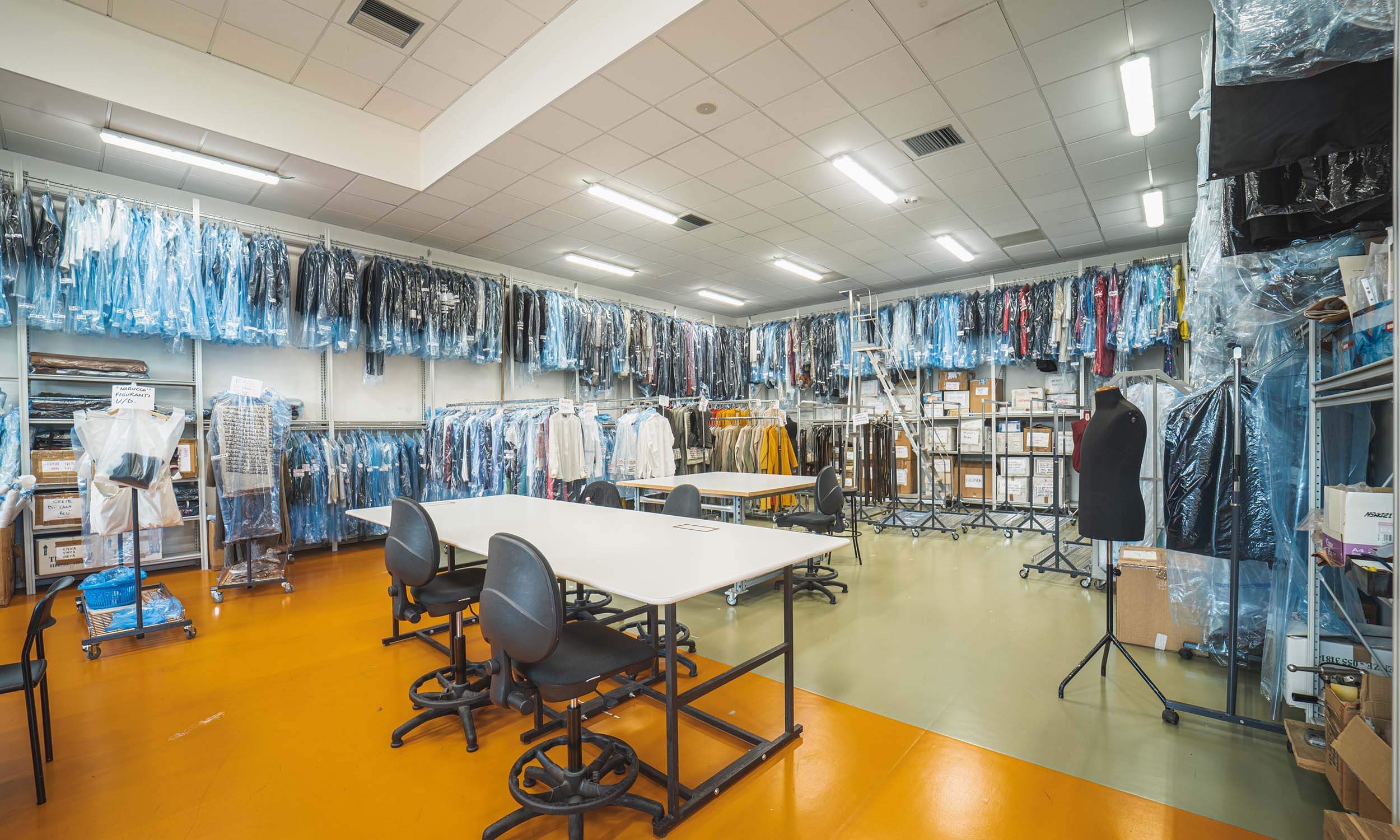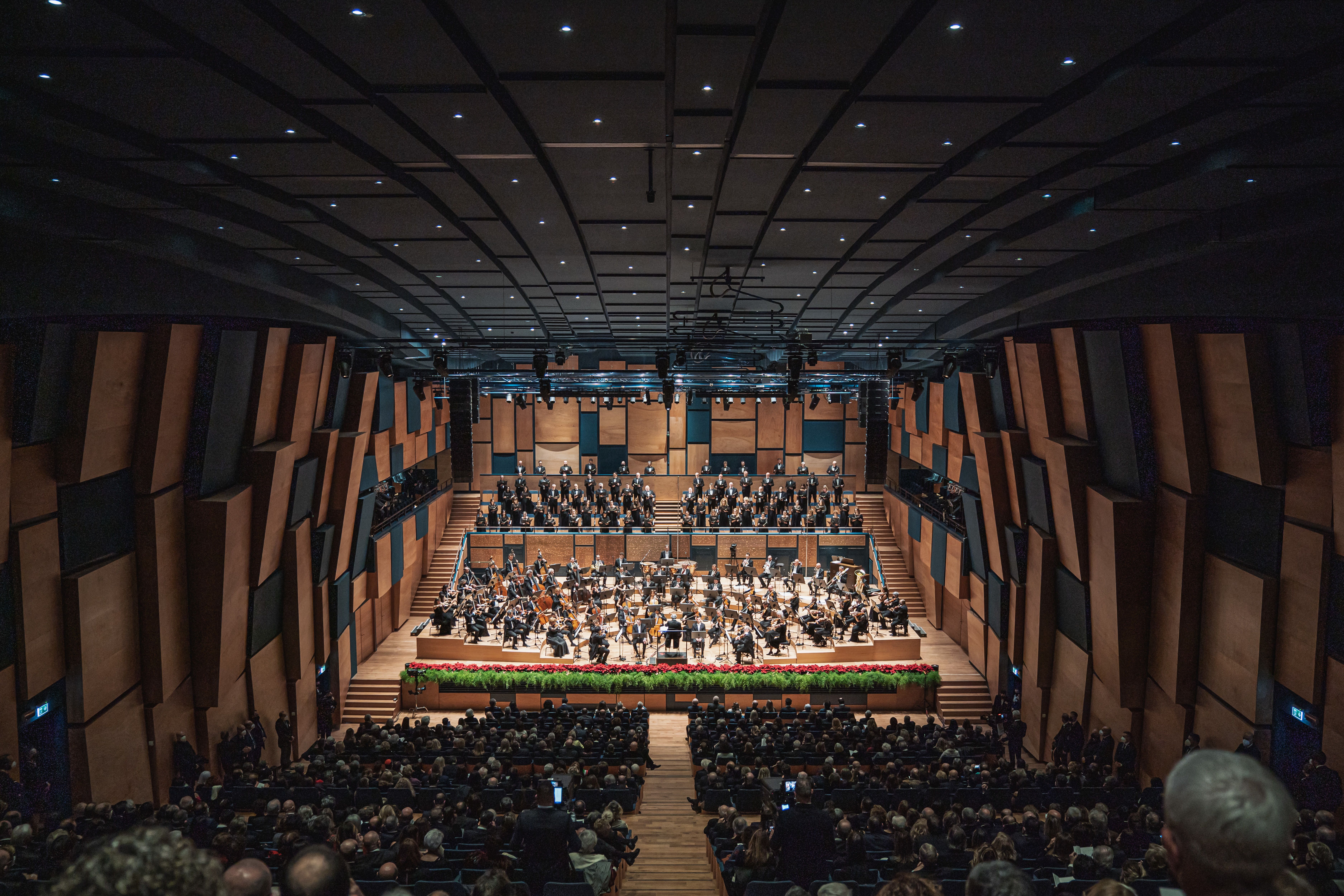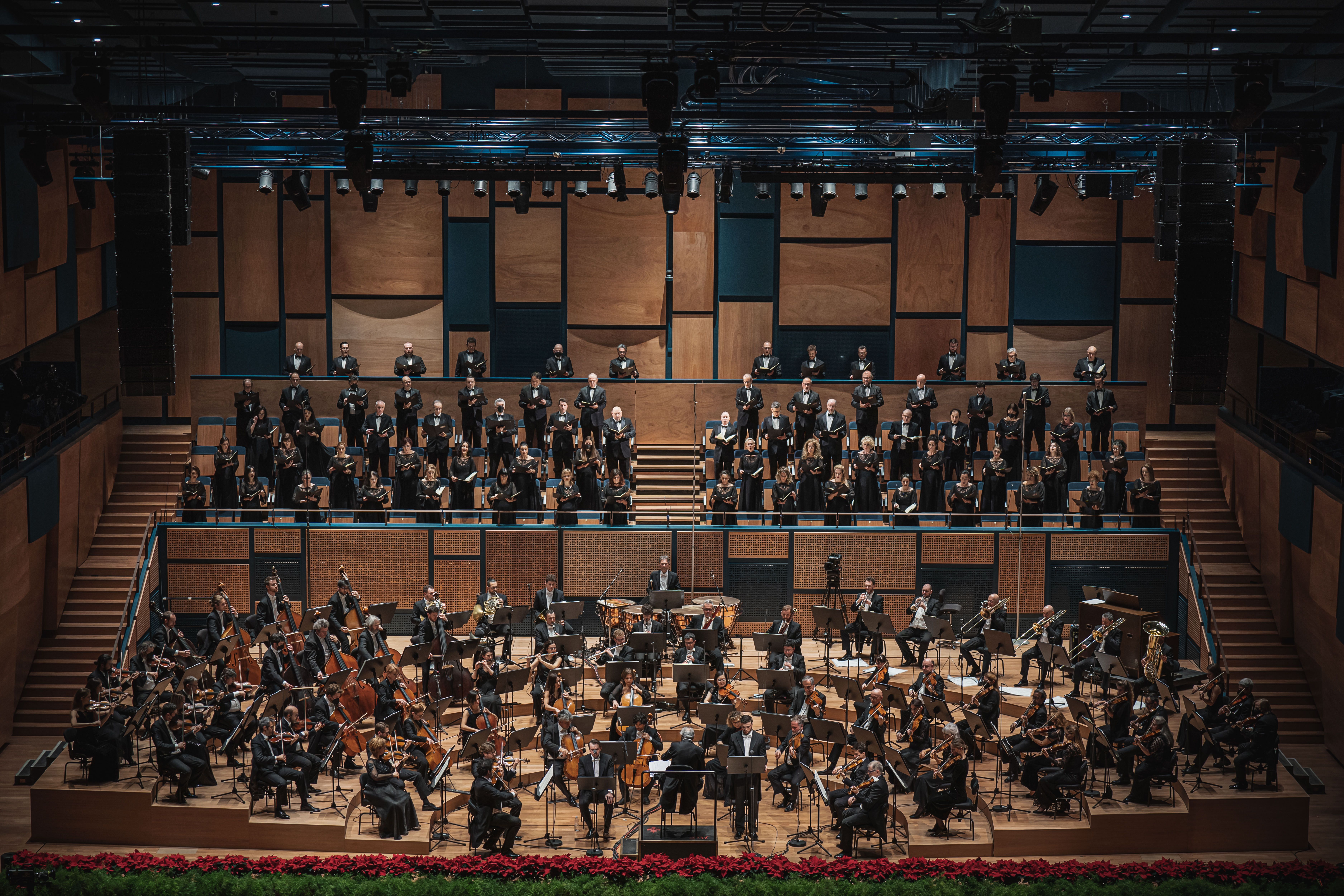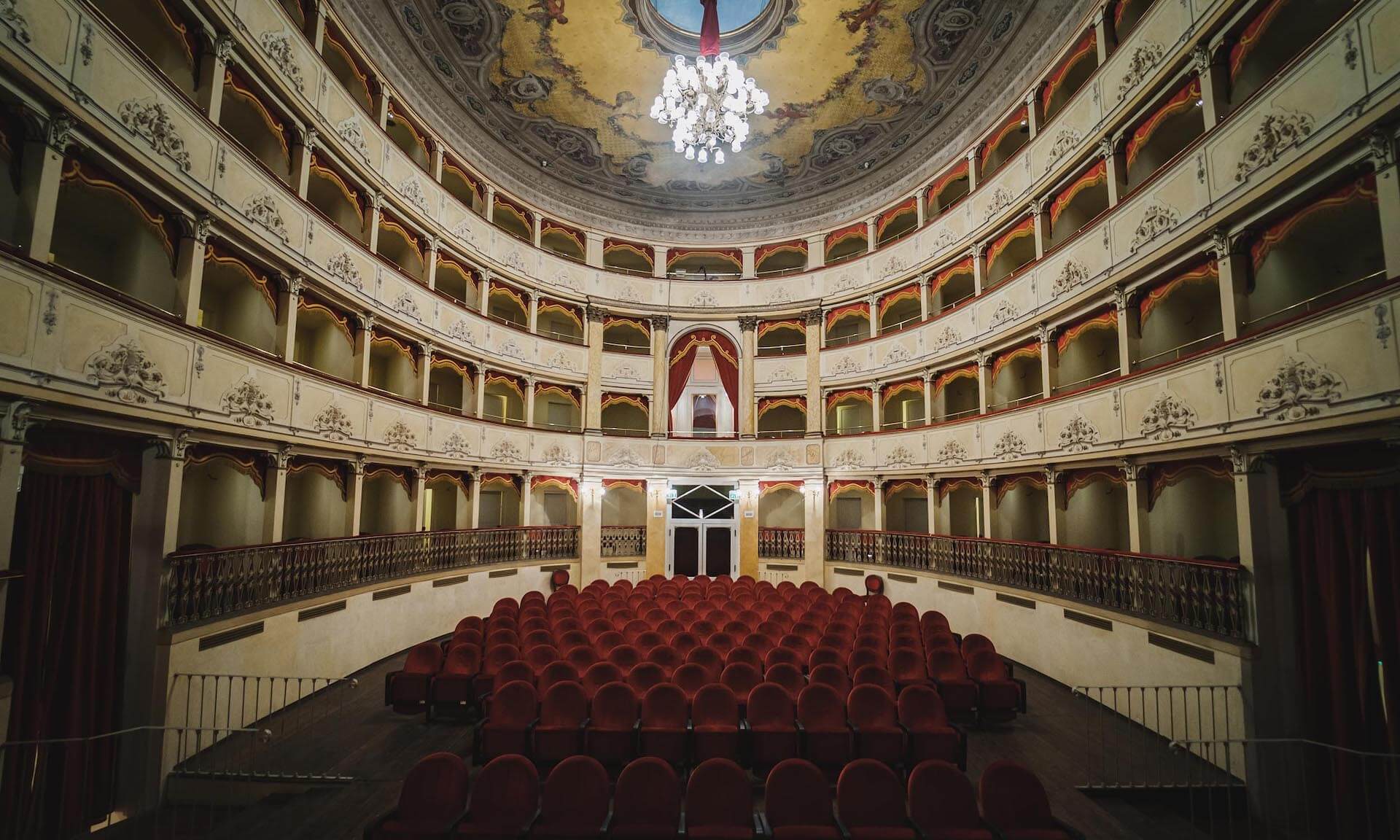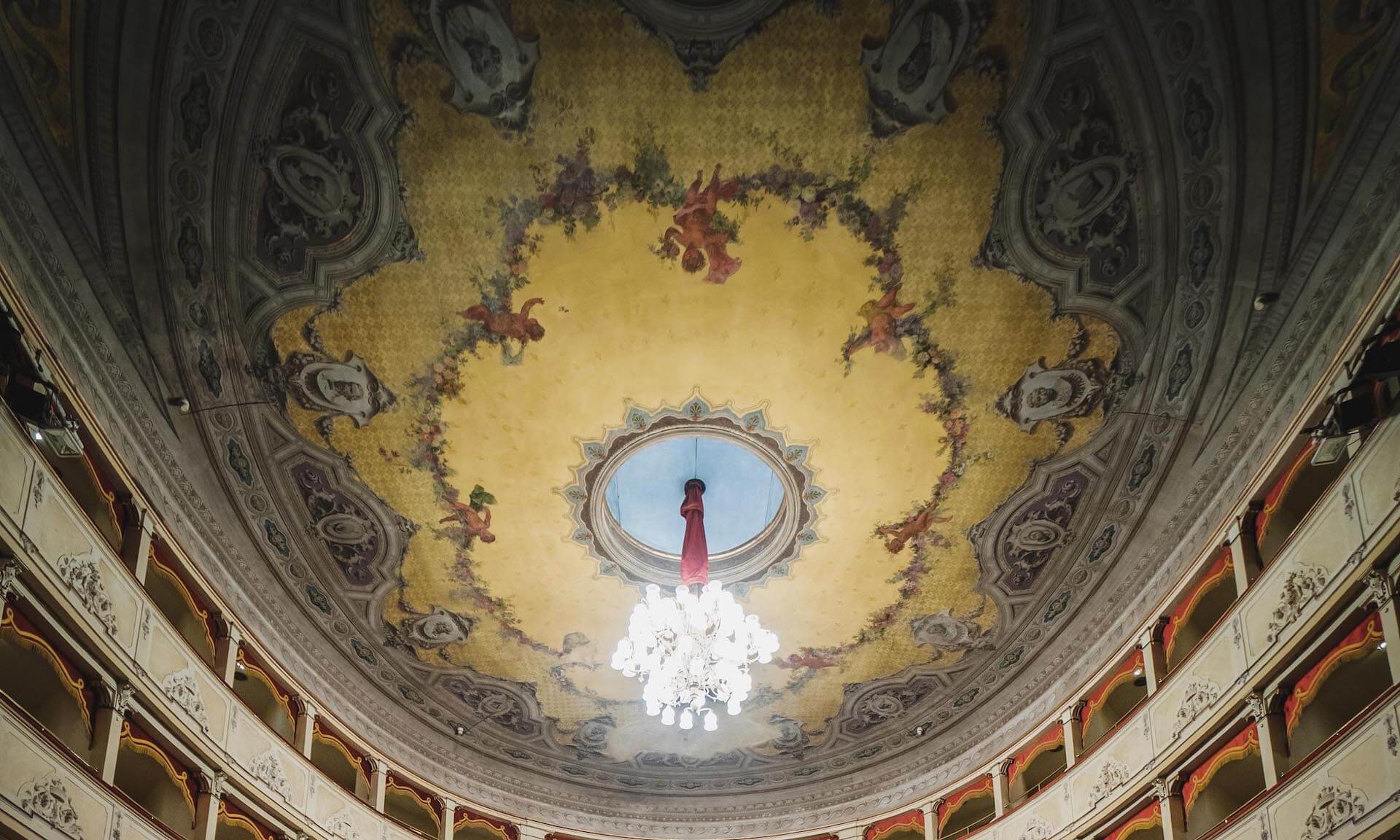The Theaters
TEATRO DEL MAGGIO
“Florence has been waiting for this room since the end of the Second World War, I personally realize a dream that I have been cultivating since I first set foot in this city in 1962. The room is warm, the acoustics are already beautiful, but over time the wood is transformed and will improve again.”
Zubin Mehta
The white marble veined with green of the Baptistery of San Giovanni, the brickwork of the dome of Santa Maria del Fiore and finally the dazzling gold of the precious paintings that have made the city of Tuscany one of the world capitals of art: the materials and colors of the Renaissance they meet at the Teatro del Maggio to celebrate the power of music, and the enchantment of melodrama, right in the city where this exceptional form of theater was born. Conceived by the architect Paolo Desideri of the ABDR studio, the “new house” of the Maggio Musicale Fiorentino rises at the meeting point between the monumental center and the Parco delle Cascine, the green lung of the city.
An important connective function also reaffirmed by the vast system of open areas that can be reached through the two areas of the city and the different volumes of the building. Moreover, the proximity to the Stazione Leopolda helps to create a cultural pole of European importance.
Above a sort of wide base, a sloping skirting, there are the large music rooms and the enigmatic volume of the 35 meter high stage tower. Three rooms, which can work simultaneously: the 1800-seat opera theater, distributed between the stalls, boxes and gallery, an outdoor 2000-seat auditorium and finally an auditorium, dedicated to maestro Zubin Mehta, which varies its capacity from 500 to 1000 spectators.
As in a great musical instrument, the walls of the main hall are covered in pear wood to guarantee perfect acoustics. A dense network of thin copper chains also helps to transport the sound without distortion. The stage has a depth doubled compared to the average of Italian and foreign theaters and, thanks to its flexibility, is able to accommodate in its side pockets up to two sets ready to be moved during the intervals. The Cavea is positioned in the theater’s roof to complement and conclude the extensive system of squares, terraces and belvedere.
Its usability is therefore not limited to representations only, but is extended to the entire day to turn its stone steps into real urban salons. Inaugurated on December 21, 2011 with the Ninth Symphony of Ludwig van Beethoven directed by Zubin Mehta, the Teatro del Maggio is the permanent venue of the Orchestra and Chorus of the Maggio Musicale Fiorentino and has already hosted Masters such as Claudio Abbado, Riccardo Muti, Gustavo Dudamel , Daniele Gatti, Fabio Luisi, leading groups such as the Berliner Philharmoniker, the St. Petersburg Philharmonic Orchestra and the National de France Orchestras. Among the many artists who performed there are Alessandra Ferri, Mariella Devia, Sumi Jo, Anja Harteros, Aldo Ciccolini, Uto Ughi, Maurizio Pollini, Krystian Zimerman, Gregory Kunde, Ambrogio Maestri. In 2014 he received the National Award for the best architectural work made in Italy in the last 5 years.
ZUBIN MEHTA HALL
Inaugurated on December 21st 2021, exactly ten years after the inauguration of the Teatro del Maggio’s Main Hall, Zubin Mehta Hall named after maestro Zubin Mehta, Maggio’s director emeritus for life.
The Zubin Mehta Hall is realized in harmony and coherence with the opera hall - the Main hall - and can be defined eclectic, versatile for its versatility and with excellent acoustic parameters; it is an auditorium place of choice for symphonic and symphonic performances choral and chamber concerts but that can be used equally for operatic performances having the possibility to create if necessary a hole for the orchestra; it can become a conference room with capacity of places varying from 1100 to half approximately. In this hall the tribune dedicated to the Choir can be transformed into a space for the audience.
THE GOLDONI THEATER
In 1807 the impresario Luigi Gargani bought the land occupied by the monastery of San Vincenzo d’Annalena with the intention of building a real pole for the show: summer arena, hall for parties and Italian theater. This, built on a project by the Florentine Giuseppe del Rosso, presents an ovoid-shaped room with 80 boxes distributed on four orders, dominated by an elegant vault decorated by portraits of famous theatrical men among festoons supported by putti. Inaugurated on 7 April 1817 in the presence of Ferdinand III of Habsburg-Lorraine with the comedy The gruff family of Carlo Goldoni and with the ballet The poor daughter of Jean Dauberval, thanks to its proximity to Palazzo Pitti it soon became the court theater, ‘Academy of Ravvivati as evidenced by the three metal torches, symbol of the company, still on the facade.
In 1825 the Fiorentina Filarmonica Society, the forerunner of the Orchestral Stable established in 1928 by Vittorio Gui and who will derive the Maggio Musicale Fiorentino and its homonymous Orchestra, performed here for the first time. The curtain of Luigi Falchinetti dates back to the fifth decade of the nineteenth century, depicting the procession of famous couples of lovers, such as Dante and Beatrice, Paolo and Francesca, Raphael and La Fornarina, following the triumphant Love chariot, accompanied by the inscription “Dai los learn the winner what is “.
Following the departure of the Lorraine court from Florence, the theater faces a long period of mixed fortunes: used even as a shelter for displaced people, it is chosen by Federico Fellini as a set for some shots of his film I Vitelloni.
After a long restoration, March 10th 1998 reopens with Claudio Monteverdi’s L’Orfeo in a historical exhibition designed by Luca Ronconi.
THE CAVEA
A theater on the theatre’s roof: the large, airy and beautiful and almost surprising open space from which you can enjoy one of the most unexpected and breathtaking views over the city of Florence. A space of almost metaphysical ‘flavor’, with its white terraces and an acoustics that, although entering into dialogue with the life of the city, offers an excellent sound.
It has a capacity of 2000 seats, a stage for operas and concerts and for the hospitality of the audience is equipped with a café open on an immense terrace.
